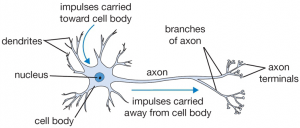As we end February, the word “PUSH” comes to my mind often in SO many different connotations. Frustration is permeating through the school with testing, data, students who are not responding to intervention, sickness, etc. With the stress swirling around, I think we as a school are feeling “the push.”
The push of…
- A math curriculum that does not allow for a day off
- A principal who needs a volunteer for…
- A coach who needs you to…
- Parents who want to ask …
- Our families who need…
Remember that each person we come in contact with is under stress and trying to complete the tasks on their list which often cause our list to grow. I was told last week, “You are so intense. Don’t you understand what I have to do?” My job was causing a “push” to this teacher and it caused anxiety. If we as adults experience this—what do you think we are doing to our students?
How in the world do we manage and do all that we do?
Stress is a growing part of our everyday lives for teachers and students. According to Stanford School of Medicine, the number of children, ages of 7-17, treated for depression has more than doubled between the years of 1995 and 2001. Based on a report, from the National Institute of Mental Health in 2014, “11.4% of population or 2.8 million adolescents, ages 12-17, have reported a major depressive episode.” Shifts in the home lives and finances of our students’ families, increase in testing, issues with peers and other factors have increased our need, as teachers, to be aware of this growing concern and how it affects our children. Even a small amount of stress produces a shot of adrenaline that can increase alertness and increase engagement such as a competition or struggling with a tough task. As educators, we must keep a good balance of productive stress while teaching our students to successfully manage stress to keep learning conditions optimal.
Your brain contains 100 billion neurons or brain cells. These cells have the primary job of receiving information and signally other neurons using electricity or chemicals to stimulate messages within the body. The hypothalamus is the regulation center of the brain which keeps your body at a constant; including temperature, heart rate, etc. Learning happens when neurons are activated and a message is sent along the axon and when repeatedly stimulated a process called synapse is created. Synapse is created when two neurons are connected from the end of the dendrite. Remember dendrites? When this action happens in the brain, it is relating to the brain the information, action or event is important to remember or retain.
See Image of a Neuron Below:
When the brain is exposed to stress the body begins to release cortisol which is the primary stress hormone. This chemical affects your heart, lungs, skin, immune system and circulation. In addition, it stimulates the hypothalamus and when it reaches the neuron, it shuts off the impulses of the dendrites which halts learning. This is a temporary response and the dendrites will grow back UNLESS there is a long term period of stress. When stress is repetitive the brain will respond by short circuiting that pathway which will stop impulses and result in the lack of input and messaging.
Many of our students are in a constant state of stress from instability at home, lack of confidence in a subject, poor self-esteem, and relationships with their peers, etc. This constant state of stress causes inability to stay on task, inattention, and lack of self-control.
The AHA Moment—students in a constant state of stress not only struggle with attention but their brain is actually inhibited from learning due too much or little cortisol.
Symptoms of Chronic Stress:
| Symptom | Examples |
| Physical | fatigue, headaches, muscle and joint pain, grinding teeth, stomach problems |
| Cognitive | inattention, lack of concentration, blaming others, poor problem solving |
| Behavioral | loss of appetite, withdrawal, acting out, tantrums |
| Emotional | anxiety, guilt, irritability, uncertainty
|
| Physiological | Increase in blood pressure, breathing, heart rate and muscle tension |
Looking at the chart above, do you recognize any of your students?
Remember two easy ways to deal with stress—
- Deep Breathing!
- Take a slow breath in through the nose (for about 4 seconds)
- Hold your breath for 1 or 2 seconds
- Exhale slowly through the mouth (over about 4 seconds)
- Wait 2-3 seconds before taking another breath (5-7 seconds for teenagers)
- Repeat for at least 5 to 10 breaths
- Movement!
Movement increases production of dopamine which is a chemical produced which combats stress and helps you feel happier and think more clearly. The movement only has to be for 2-3 minutes and can be simple tasks.
- Go Noodle
- Silent Ball
- jog in place or do 10 jumping jacks
- get up find a partner to share information
Remember stress is inevitable. How we deal with it and teach our students to respond—is up to us!
The following older Blogs were used to create this Blog.
